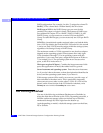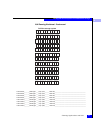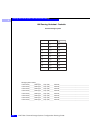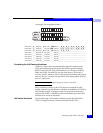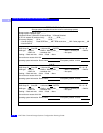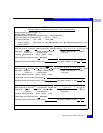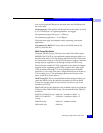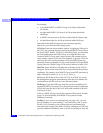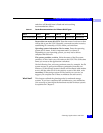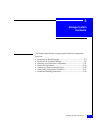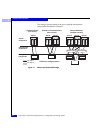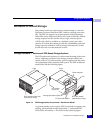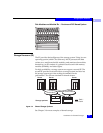
4
4-14
EMC Fibre Channel Storage Systems Configuration Planning Guide
Planning LUNs and File Systems with Unshared Direct Storage
For example,
• A five-disk RAID 5 or RAID 3 Group of 36-Gbyte disks holds
144 Gbytes;
• An eight-disk RAID 1/0 Group of 36-Gbyte disks also holds
144Gbytes;
• A RAID 1 mirrored pair of 36-Gbyte disks holds 36 Gbytes; and
• An individual disk of a 36-Gbyte disk also holds 36 Gbytes.
Each disk in the RAID Group must have the same capacity;
otherwise, you will waste disk storage space.
LUN Size. Enter the user-available capacity in gigabytes (Gbytes) of
the LUN. You can make this the same size as the RAID Group, above.
Or, for a RAID 5, RAID 1, RAID 1/0, or RAID 0 Group, you can make
the LUN smaller than the RAID Group. You might do this if you
wanted a RAID 5 Group with a large capacity and wanted to place
many smaller capacity LUNs on it; for example, to specify a LUN for
each user. However, having multiple LUNs per RAID Group may
adversely impact performance. If you want multiple LUNs per RAID
Group, then use a RAID Group/LUN series of entries for each LUN.
Disk IDs. Enter the ID(s) of all disks that will make up the LUN or
hot spare. These are the same disk IDs you specified on the previous
worksheet. For example, for a RAID-5 Group in the DPE (enclosure 0,
disks 2 through 6), enter 0_2, 0_3, 0_4, 0_5, and 0_6.
SP. Specify the SP that will own the LUN: SP A or SP B. You can let
the management program automatically select the SP to balance the
workload between SPs; to do so, leave this entry blank.
RAID type. Copy the RAID type from the previous worksheet. For
example, RAID 5 or hot spare. For a hot spare (not strictly speaking a
LUN at all), skip the rest of this LUN entry and continue to the next
LUN entry (if any).
If this is a RAID 3 Group, specify the amount of SP memory for that
group. To work efficiently, each RAID 3 Group needs at least
6Mbytes of memory.
Caching. If you want to use caching (entry on page 4-12), you can
specify whether you want caching — read and write, read, or write
for this LUN. Generally, write caching improves performance far
more than read caching. The ability to specify caching on a LUN basis
provides additional flexibility, since you can use caching for only the



